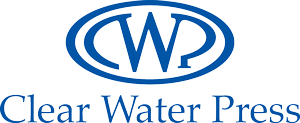Clear Water Press Language Arts programs are used in many co-ops and schools. Check out these reviews from people using our programs in a group.
Jen Creel reviews Clear Water Press programs for co-op
A trained teacher and homeschool mom of three, Jen has taught our programs in a large co-op for ten years. All of her kids took The One Year Adventure Novel, Cover Story, Byline, or Other Worlds—one of them took them all; OYAN multiple times! Jen shares her experience with you here.
Whether it was Daniel Schwabauer’s intent or not, Clear Water Press curricula work brilliantly in a group or co-op setting! I have been blessed to teach “Mr. S.’s” classes at our co-op for the past 10 years.
I know that first One Year Adventure Novel, then Cover Story, Byline and even Other Worlds were meant to be understood as a family. A homeschool unit. We have done that in our home and loved watching Mr. S. videos together. The way he presents his lessons, there really is something for every age group (adults included) to learn and ponder. There were days when we stopped watching so that we could really think about the interesting ideas Mr. S. presented. There were other weeks when we wanted to keep watching lessons, just to see what he would do next! The Super Guaco Taco review in Cover Story was a lesson that made us all laugh. Who would have thought that my kids were learning about descriptive adjectives, brainstorming techniques and how to convey emotions succinctly?!
The group or class setting, though, does so much more for the student’s self-esteem than what can be taught at home.
In my classes, with Mr. S’s encouragement, we’ve made a point of bouncing ideas off each other. This gives each student brain-storming ideas to begin with, but then increased confidence as we progress to the more in-depth writing assignments later in the year. By the time we get to December, and invariably the most difficult assignment of the year, students are all comfortable throwing ideas out to the class and getting terrific outside-the-box feedback.
Works brilliantly in a group or classroom setting!
If you have only had Clear Water Press classes at home, it’s probably hard to imagine, logistically, how a classroom setting works. Our classes only meet once a week; this offers some challenges, but set up with some structure, class time ends up being a blessing.
We begin each class with about 10 minutes of chatting about the last week’s homework assignment. When we met in person, we watched the first of three lessons for the week on a TV with a DVD player and then discussed what Mr. S had assigned for homework. We repeated that for each of the three lessons within the 90 minutes, so having the runtimes of the lessons was pretty important. (Thankfully, the team at Clear Water Press is able to provide runtimes for teachers on request.) Now that we’re primarily online for classes, we follow the same structure, except that we use Zoom for our class, and all turn off our screens and microphones when it’s time to each individually stream the lessons. I know that everyone is done when all screens are back on. This works well, because students are still able to interrupt the class streaming if they’re having technical difficulties. Last year, students who were unable to access a lesson had to read the lesson while the rest of us streamed, and then watched the lesson later. With storms here in Houston, we’re never sure when the internet might be down!
Another aspect of Clear Water Press programs that needs adjustment when meeting as a group is homework. Homework, in Mr. S.’s classes, can be tricky in a group setting because it’s in a workbook. When meeting in person, I suggest gathering all books from students early in the day, or before class begins. I have collected them at the beginning of the co-op day, asked for a designated hour or two to grade, depending on the number of students, and had the books back to everyone by the end of the day.

Other years I have had an assistant grade while we were in class. That really doesn’t work as well for me, since then I really don’t know how students are progressing. That’s personal preference though.
Now that we’re online, I use Google Classroom and have students upload (take a picture of their lesson pages) within Google Classroom, so that I can comment, grade and return their work. I have students finish their homework within 4 days, so that I have time to grade, and get notes back to them, before the next class. This helps me keep up to date with how each of the students is doing, if he/she understands what’s being explained, and if we need a one-on-one Zoom call to clarify. Google Classroom is one of many programs that now allows students to upload homework, and even keeps track of grades (although I still keep a paper copy 😊). A little research online will pull up many.
The group or class setting does so much more for the student’s self-esteem than what can be taught at home.
A benefit to group or co-op classes is that students who are very different from each other find that they have ideas in common when writing. They enjoy being like-minded and knowing that a thought one person has (though it may seem small in that student’s head) can spur on another who is experiencing writer’s block. We had that happen in a Byline class, with lessons 28-30. The assignment is to write a review of either the premiere of Beethoven’s 9th Symphony in 1824 or the 1904 premiere of James Barrie’s Peter Pan! What a wonderful challenge – and yet some couldn’t get past the lack of technological advancements in the silent movie version of the play. Those students bounced ideas around and chose to get closer to the music of Beethoven by actually painting a canvas version of what they were hearing.
For the second semester in each of my Mr. S. classes, we begin a critiquing process introduced to me by The One Year Adventure Novel. I hand out a written copy that must be followed when critiquing others. Once a month (or more frequently for OYAN and Other Worlds) we each choose a segment of what we’ve written and read it aloud to the class. We all get to hear the segment read, but also have a printed copy of the work in front of us. Each student is to glance through and make cursory notes on the written copy, listen attentively to the reading, and then verbally comment and make further notes on the written segment. After the reading, classmates are to use the “sandwich method” to critique verbally. Each must come up with one positive thing to say about the segment, kindly and politely suggest a possible change and then finish with an overall, but specific, encouragement. The written copy gets handed back to the author, so that he/she can revise if desired. This has been an amazing life lesson not only for students, but for me as well!
I will say that this past year, with COVID, we have had some unique challenges in class. Meeting each week on Zoom, never seeing each other in person, I was a little surprised that critiquing could still happen. Really though, it may have been less intimidating for our introverts than being in person! Even technology itself became a blessing as one student decided not only to write a ballad for lessons 64–66 in Cover Story, but also write music for it, and perform it for me on video!
When my own kids were little, medium sized, and high schoolers, and we were all together watching Mr. S. as a family, it was oodles of fun! We took notes and wrote and rewrote novels. Those novels were the highlight of our school year, and sometimes the most challenging part! Really though, there are so many benefits to Mr. S. classes as a group, that I much prefer Cover Story, Byline, OYAN and Other Worlds with friends in a classroom setting!
What other teachers have to say…
Info on adapting for a group:
Questions? We’re always happy to help with the group order process and the planning. Please don’t hesitate to contact us. We have a special form for queries about group orders.
